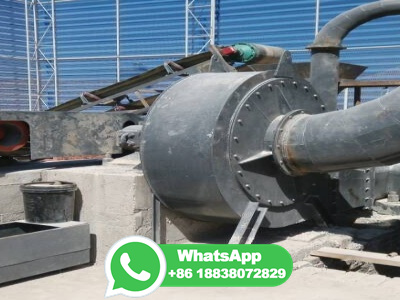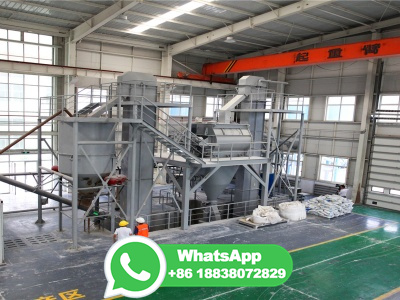
Carbonization is a lowtemperature thermochemical process that converts organic matter in the absence of oxygen mainly into char, gas, and liquids. Biocoke is a char prepared from a mixture of biomass/charcoal and a coal blend. It can reduce greenhouse gas emissions by replacing coke and reducing coal consumption in the ironmaking process.
WhatsApp: +86 18037808511
CARBONIZATION definition: formation of carbon from organic matter | Meaning, pronunciation, translations and examples
WhatsApp: +86 18037808511
The properties of the carbon materials obtained as the final product of coal tar pitch carbonization process are a consequence of the type of chemical and physical phenomena occurring through the process.
WhatsApp: +86 18037808511
Silicon carbide nanoparticles (nSiC) have been used to modify coal tar pitch (CTP) as a carbon binder. The influence of ceramic nanoparticles on the structure and microstructure was studied. The structure of CTPbased carbon residue with various nSiC contents was analyzed by using SEM with EDAX, Raman spectroscopy, and Xray diffraction. The effect of ceramic nanofiller on the crystallite ...
WhatsApp: +86 18037808511
This is considered because chlorine in coal is dispersed in coal molecular structure and the release of chlorine from coal during carbonization is a slow process (Nomura, 2010), while PVC which is added as a 25 mm waste plastic agglomerate decomposes and the releases of chlorine as HCl from PVC are faster than coal. The chlorine residue ratio ...
WhatsApp: +86 18037808511
Carbonization of coal is its decomposition by heat, out of contact with air, into a solid residue, coke, and liquid and gaseous distillation products. The main objective of the process of carbonization is the production of either hard coke or gas, the liquor being a valuable product in each case.
WhatsApp: +86 18037808511
Coal Gasification. Nicola J. Wagner, ... van Dyk, in Applied Coal Petrology, 2008 Publisher Summary. This chapter deals with coal gasification, which is a process that converts carbonaceous materials, such as coal, petroleum, petroleum coke, or biomass, into carbon monoxide and gasification as a powergeneration technology is gaining popularity due to the ready global ...
WhatsApp: +86 18037808511
hi, i talk about carobonization of coal, process of carbonization, types of carbonization and difference between low temperature carbonization and high temp...
WhatsApp: +86 18037808511
Formation of Coal (Process) Coal is composed of carbon, hydrogen, oxygen, nitrogen, sulphur, moisture, and incombustible mineral matter (, ash). Fluorinated gases are not formed by coal combustion. Coals are formed from the accumulation of vegetable debris in specialized environments. Obtaining coal from the mines is a difficult job.
WhatsApp: +86 18037808511
Overview of General Steps of Primary Carbonization Process Primary carbonization has been extensively reviewed starting with Franklin [44,45] as the pioneer in these studies followed by the review works of Oberlin and Bonnamy [3639]. Primary carbonization refers to transformation of an initial precursor carbon to mesophase
WhatsApp: +86 18037808511
coal processing In coal utilization: Carbonization (coke making) Coke is the solid carbonaceous residue that remains after certain types of coal are heated to a high temperature out of contact with air. The process of heating coal in this manner is referred to as carbonization or coke making. Hightemperature carbonization,. Read More
WhatsApp: +86 18037808511
Lowtemperature coal tar is rich in oxygenated compounds which are hard to remove and make a great influence on the quality of needle coke. Lowtemperature coal tar (LTCT) and decant oil (DO) were used to cocarbonize to prepare needle coke by liquid phase carbonization, and the evolution of oxygenated structures in LTCT during the preparation of needle coke was investigated.
WhatsApp: +86 18037808511
The aim of this research was to evaluate the technoeconomic prospect of hydrochar production through cohydrothermal carbonization of coal waste (CW) and food waste (FW). A process flow diagram was developed that considered seven reactors, six pumps, and other necessary equipment for producing 49,192 kg/h hydrochar. Three different cases were considered for the economic analysis. Case II ...
WhatsApp: +86 18037808511
Coal carbonization is the process by which coal is heated and volatile products (liquid and gaseous) are driven off, leaving a solid residue called coke. Carbonization of coal involves heating coal to high temperatures either in the absence of oxygen (O2) or in control quantity of O2. A gaseous byproduct referred to as coke oven gas (COG ...
WhatsApp: +86 18037808511
Carbonization The process of strong heating of coal in the absence of air converting it into coke is known as carbonization of coal. Coke Lustrous, dense, porous and coherent mass obtained by strong heating of coal in the absence of air is called coke. Types of carbonization a) Lowtemperature carbonization heating coal at 500 7000C.
WhatsApp: +86 18037808511
For Complete Engineering Chemistry Notes: https:///l/shubhanshukenotes this video is about " Carbonization Process Of Coal || Manufacturing Process Of ...
WhatsApp: +86 18037808511![Explain the process of carbonisation and how coal is formed? [5 MARKS]](/s0j6hgr/322.jpg)
Solution Process : 3 Marks Carbonisation : 1 Mark Coal formation : 1 Mark About 300 million years ago the earth had dense forests in low lying wetland areas. Due to natural processes, like flooding, these forests got buried under the soil. As more soil got deposited over them, they were compressed.
WhatsApp: +86 18037808511
Introduction. As the combustion of fossilbased solid fuels for energy production remained one of the largest contributors of global CO 2 emissions, the cofiring of coal and plastic residues with carbonneutral biomass attracted wide attention from researchers as a potential strategy for CO 2 reduction in power generation plants [1], [2]. Meanwhile, coal is regarded as the largest source of ...
WhatsApp: +86 18037808511
Carbonisation is the term used to denote the heating of coal in the absence of air. In these circumstances, volatile matter (VM) is removed. The volatiles are higher in hydrogen content than the basic coal, which therefore increases in carbon — hence, "carbonization".
WhatsApp: +86 18037808511
Process of carbonization of coal. The coal to coke transformation takes place as the coal is heated. When the state of fusing is reached, the layer of heated coal softens and fuses. From about 375 deg C to 475 deg C, the coal decomposes to form plastic layer. Destructive distillation reactions proceed rapidly in the plastic layer with evolution ...
WhatsApp: +86 18037808511
Hydrothermal carbonization (HTC) of sewage sludge reduces the waste volume and can be source of energy and valuable products. Furthermore, HTC offers several advantages over conventional drythermal pretreatments, as no prior drying is requested, and the high quality of the char produced promotes applications as energy production and storage, wastewater remediation, and soil amendment.
WhatsApp: +86 18037808511
As shown by the results of the elemental analysis in Table 1, regardless of the process of HTC or LTP, carbonization caused the aggregation of carbon element and the releasing of hydrogen and oxygen.
WhatsApp: +86 18037808511
Abstract Hydrothermal carbonization (HTC) has gained a lot of interest in the last few years for the process production of hydrochar from the different kinds of biological materials such as agricultural waste. Therefore, a thorough review of the literature on HTC has been conducted, which is more energyefficient and involves hydrochar preparation at a lower temperature without any specific ...
WhatsApp: +86 18037808511
The fuel characteristics and combustion behavior of the hydrochar obtained from the cohydrothermal carbonization (coHTC) of sewage sludge (SS) and coal slime (CS) were investigated. The results showed that a synergistic effect existed during the coHTC process of SS and CS, which could make the mass yield, high heating value, carbon retention rate, energy recovery efficiency, fuel ratio, and ...
WhatsApp: +86 18037808511
[2] Carbonization is a pyrolytic reaction, therefore, is considered a complex process in which many reactions take place concurrently such as dehydrogenation, condensation, hydrogen transfer and isomerization . Carbonization differs from coalification in that it occurs much faster, due to its reaction rate being faster by many orders of magnitude.
WhatsApp: +86 18037808511
Cohydrothermal carbonization (coHTC) has emerged recently as a promising thermochemical technique that can transfer organic solid residue (, biomass, sewage sludge, plastic, livestock manure) into valueadded products (, hydrochar).This advanced mechanism conceals the weakness of hydrochars derived from the hydrothermal carbonization (HTC) of a single feedstock.
WhatsApp: +86 18037808511